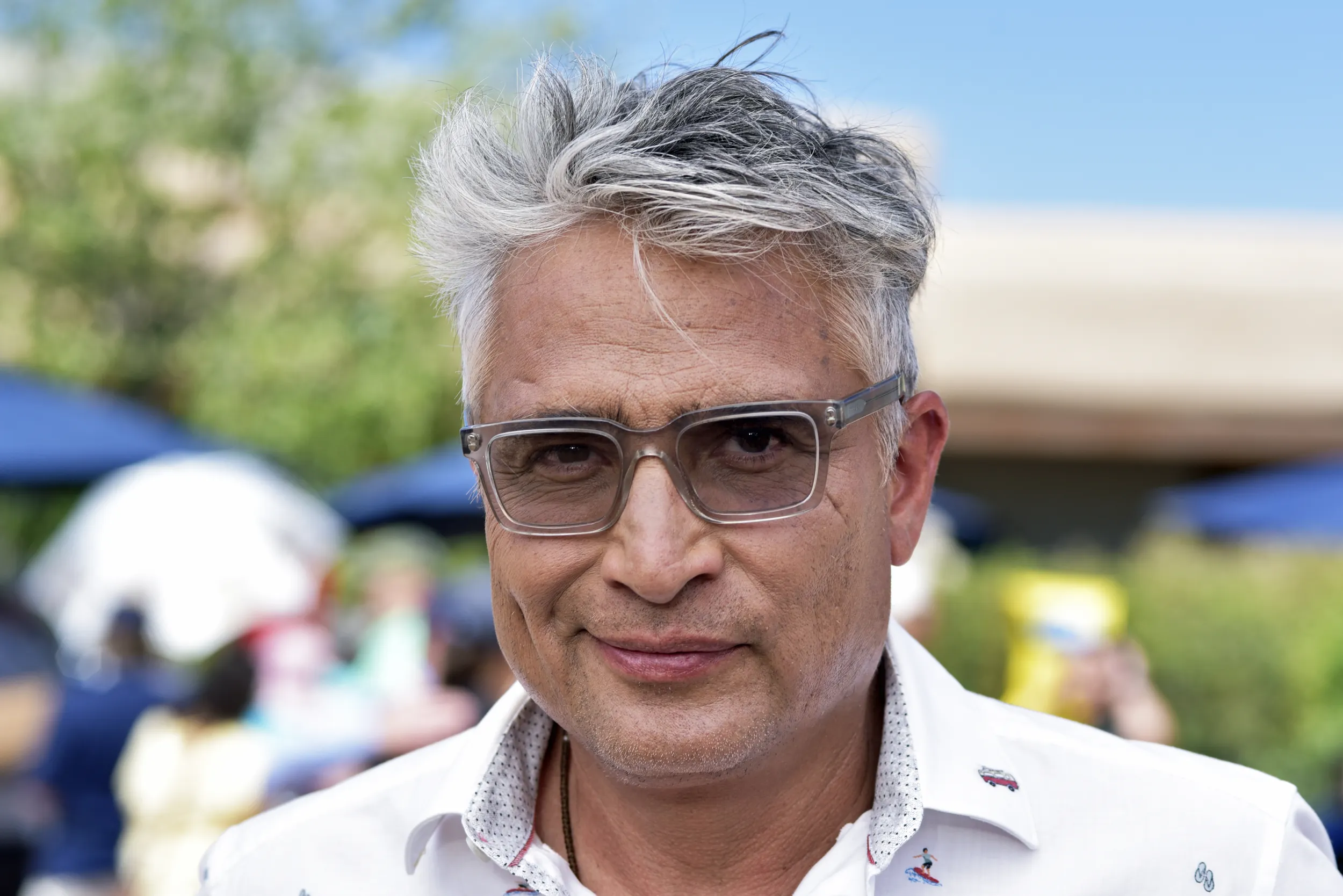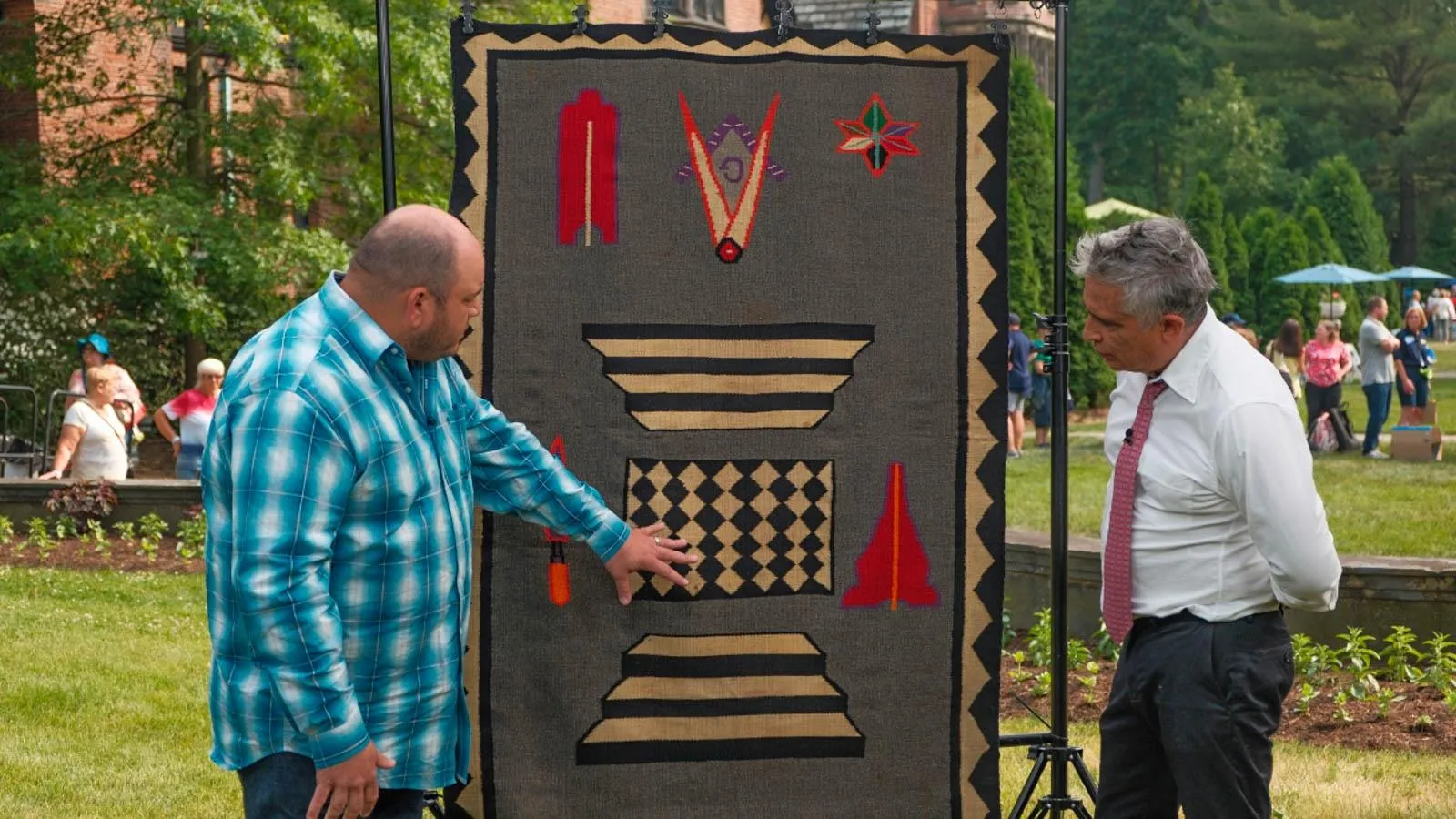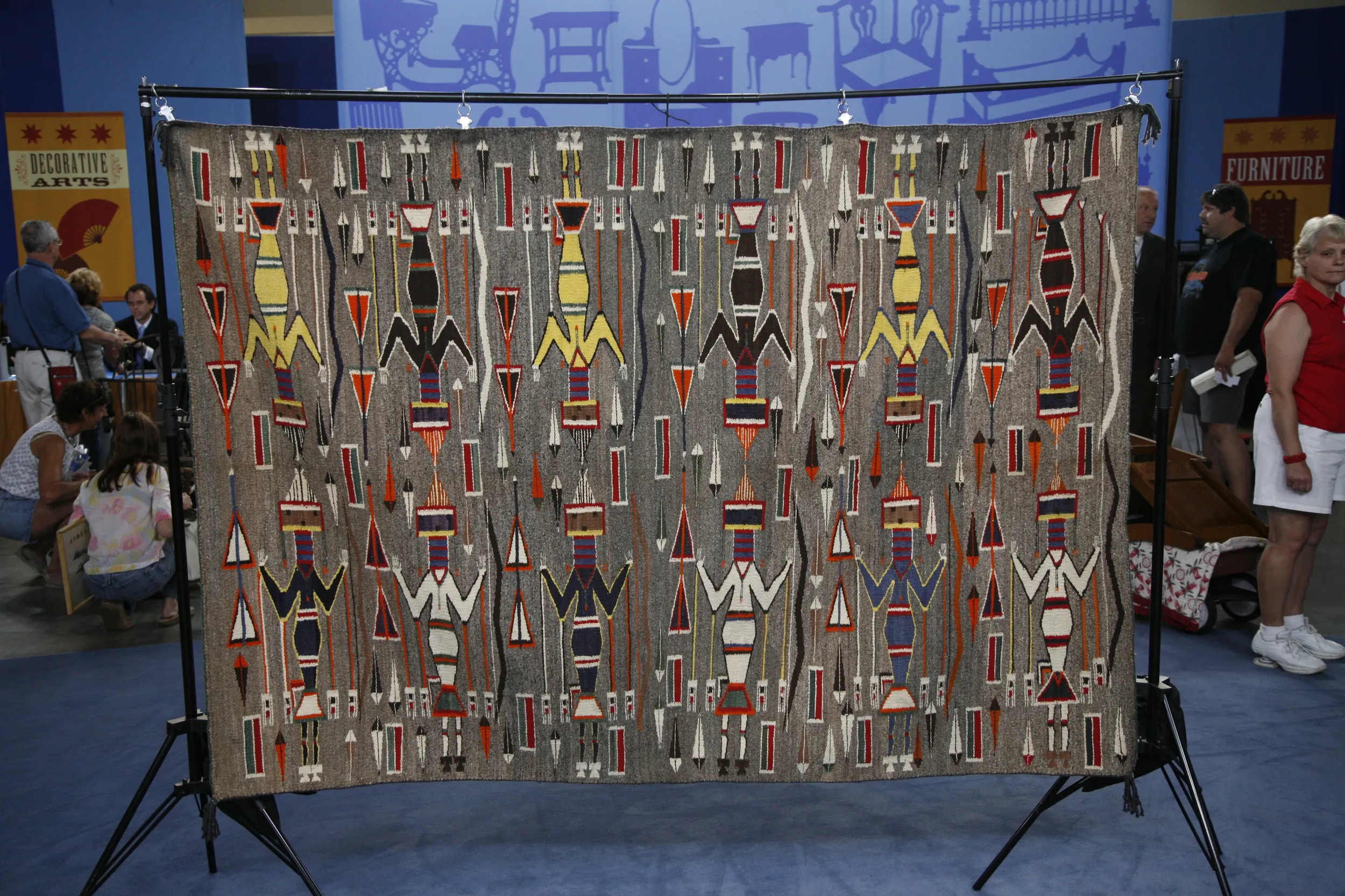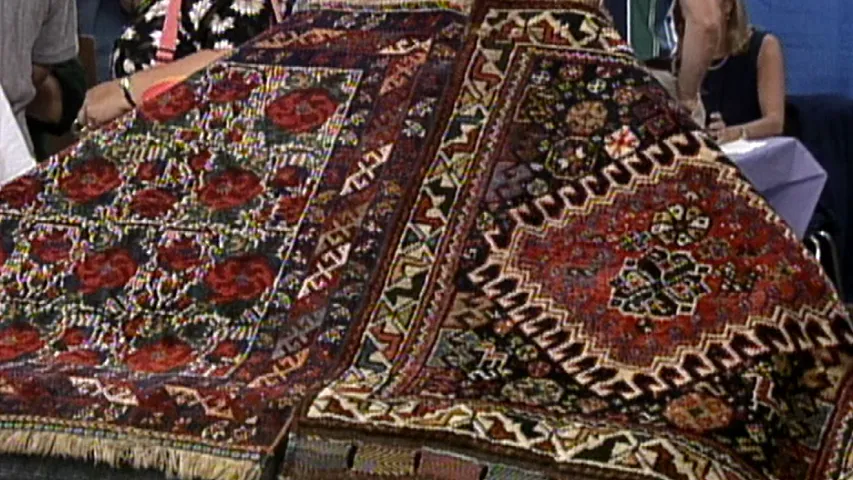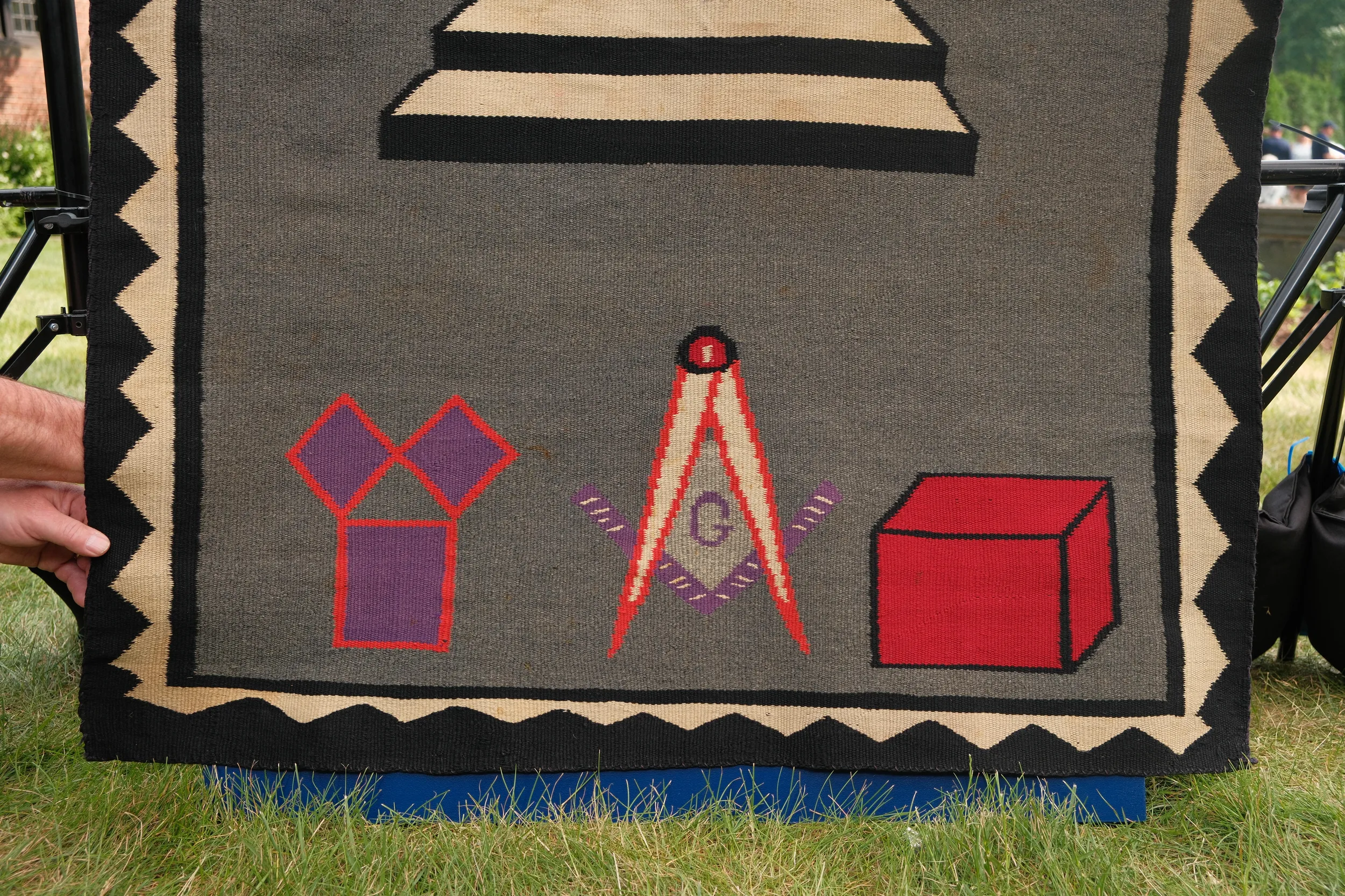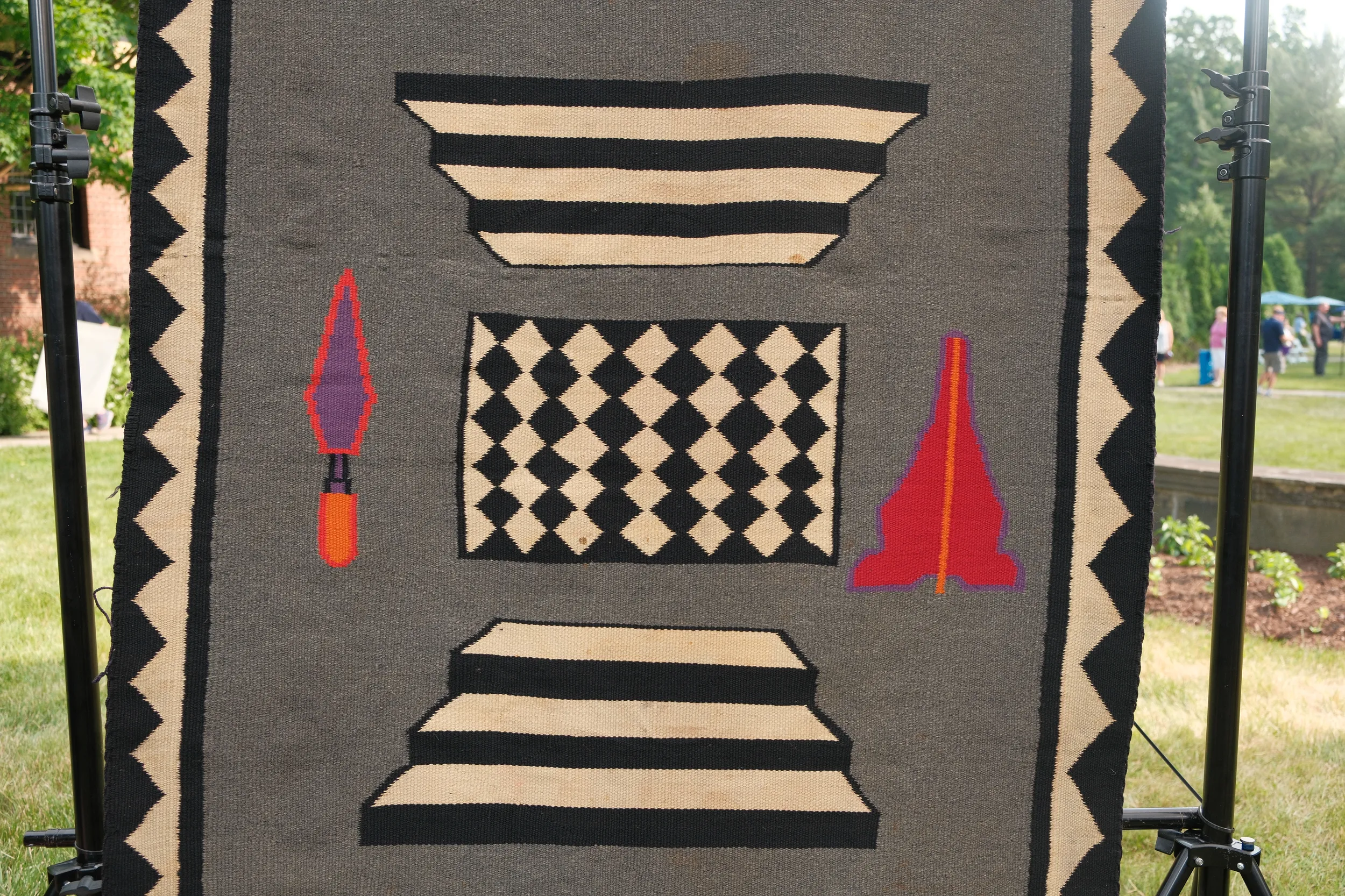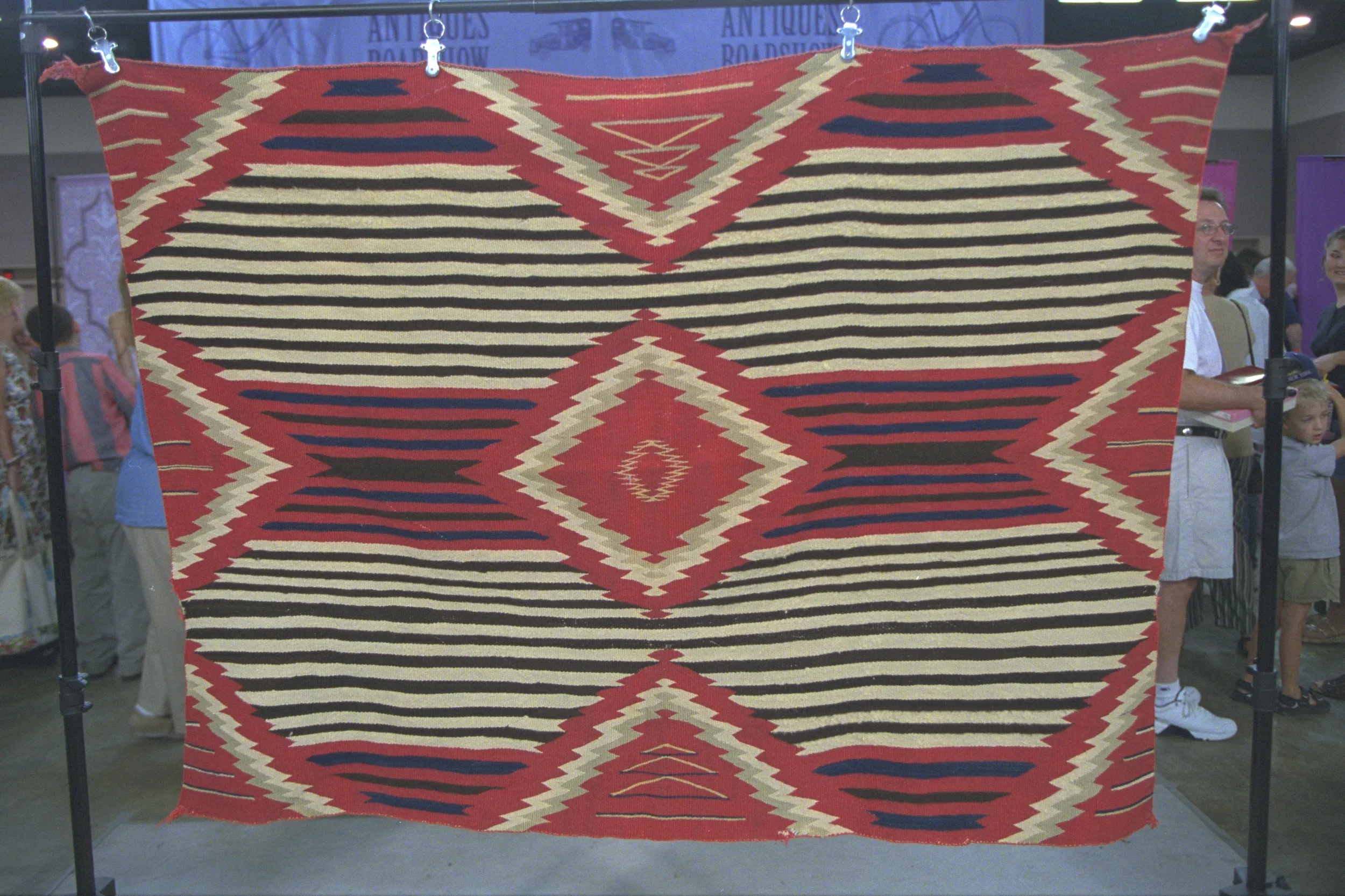GUEST: This is a Masonic Navajo Indian rug. It belonged to my great-grandfather. And the story goes, around 1930, he found himself in New Mexico, and he did some work for fellow Masons there. And they showed him some type of rug similar to this. And they said, "If you go up to "the Navajo Indian reservation near Gallup, they make 'em up there." So when he found himself near Gallup, he said, "I want to get one of those Masonic Navajo rugs made," and they said, "We'll do it." And because he was a construction worker, he put in a linoleum flooring in some of their buildings on the reservation in trade for this rug. He passed it on to my grandmother and grandfather, who were also part of the Masonic Lodge. Then they gave it to my dad, who is a Mason. And then when I became a Mason, my father gave it to me, and I've had it for about 20 years.
APPRAISER: I, I'm really curious. Tell me a little bit about the Masons.
GUEST: Well, the Masons are an organization of men. They believe in God, and they believe in order to serve God, you're supposed to have a positive impact on your family and on your community and on the world. But before you can do that, you have to make yourself a better man on the inside. And so that's kind of the general idea.
APPRAISER: Beautiful. Well, you know what I love about that is that those doctrines of altruism, they tie into family and community.
GUEST: Mm-hmm.
APPRAISER: And so, so much of those values are really part of the Navajo values. There's some things that really excited me when I fir– you brought this in, I looked at it. I thought, "Wow, that's a Navajo rug." And then when I hear that this came from my hometown I was born in, I was really excited. I thought… I'm from Gallup, New Mexico. I was born and raised there.
GUEST: Right.
APPRAISER: And I'm half-Navajo. And so when I look at this, I think it called out, to say, like, "I want to, I, I want to not only appraise this, but I want to learn from this." This, what looks like, um, calipers? What is…
GUEST: It's called the Square and Compasses. The G in the middle stands for God. And the idea is, with the square, it's kind of like a ruler. You use it to make perfect 90-degree angles. You're supposed to live your life justly and fairly and squarely with others. And then the compasses, you remember from your middle school and high school geometry class, you would use it to make a perfect circle.
APPRAISER: Right.
GUEST: Those things that are pleasing to God should remain in the circle. And those things that aren't fruitful for your fellow man should be outside the circle.
APPRAISER: This Navajo weaving was woven with commercial yarn, which came from Germantown, Pennsylvania.
GUEST: Okay.
APPRAISER: And in the regular world, we call this a Navajo pictorial.
GUEST: Okay.
APPRAISER: And I find the story behind this as interesting– it, it empowers the weaving. It creates some dynamic element.
GUEST: Yes.
APPRAISER: I think it's a fantastic example of the connection between people,
and how we can actually have, share...
GUEST: Yeah.
APPRAISER: ...the same doctrines of these values. There are some other
similar examples of Masonic weavings. I'm thinking a, a value that I would put on this in a, in a retail type of situation would be about $7,500.
GUEST: Wow.
APPRAISER: $7,500.
GUEST: (chuckling) Dad and Grandpa will be, uh, interested to know that. They've been wondering that for a while.
APPRAISER: For an insurance, replacement value, I would say that, that a weaving like this would be around $10,000 to insure it.
GUEST: But, uh, for the family, it's the family story, and it gets brought out all the time, and new people get to learn the story. And now that you've added to it, I have more I can tell them.
APPRAISER: Fantastic.
